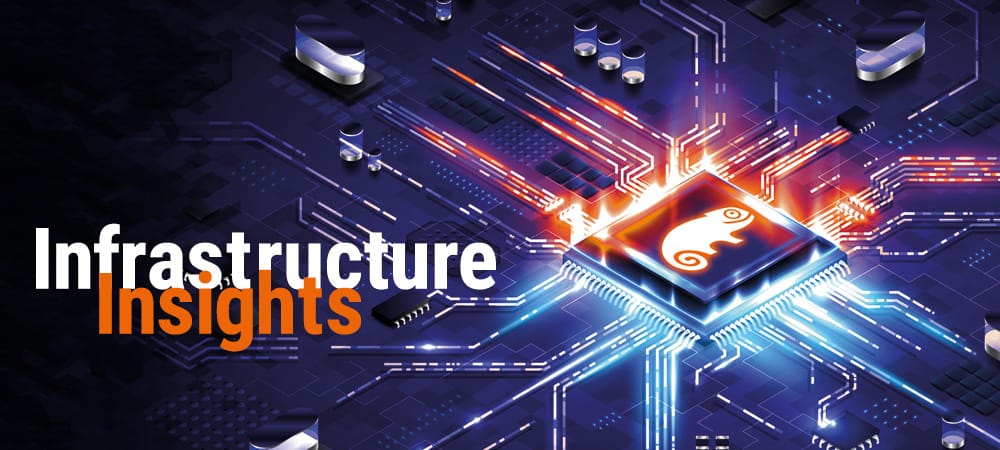From official and less official


Not a bad idea! Those who are fit are usually more attractive. Naturally, you have to do a lot for this, and in the SAP community this is often associated with higher license fees.
Making your own system fit with Solution Manager is only possible to a limited extent if you are a standard support customer. They are only allowed to use a fraction of the SolMan functions, which means that fitness falls by the wayside.
Enterprise Support customers have it better, they are allowed to use all SolMan tricks and thus probably achieve maximum innovation fitness. EhPs (SAP Enhancement Packages) are also well suited for an ERP fitness program - but not always free of charge!
SAP customers should be particularly careful with the new MDM/MDG functions in master data management (master data management and master data governance). There are a number of settings here that, in contrast to current practice, may very well require a license.
The DSAG/SAP paths to innovation fitness are thus convoluted and challenging, but probably good business for both organizations. Matthias Kneissl, Managing Director of Q-Partners and intimate connoisseur of all SAP community trends, was available to answer critical questions from E-3 Editor-in-Chief Peter Färbinger after the DSAG Technology Days.
Peter Färbinger: Two days of DSAG Technology Days in Mannheim according to the motto "Paths to Innovation Fitness". What is your conclusion, what were the main topics?
Matthias Kneissl: Hana and in-memory computing are probably the most important topics for the SAP community. Now that Hana has also been released for the ERP Business Suite, all other SAP products will gradually be converted.
In addition to Hana, mobility is naturally also a major topic for SAP's existing customers. With in-memory computing technology and the mobilization of business processes, what belongs together is growing together. At the same time, the operating concepts for these topics are also gaining in importance.
Färbinger: So that means all customers will have to change and reorient themselves. How do you assess what's in store for us?
Kneissl: SAP emphasizes that the transition from NetWeaver to Hana will be bigger than the transition from R/3 to NetWeaver. The challenges are numerous, starting with the infrastructure, which has specific requirements.
This already starts with the fact that in the future, an application server will have to be installed and operated in addition to a central instance. At the same time, new technologies are also moving into the SAP world with the new NetWeaver Stack 7.4. The Workbench Editor, transaction SE80, will be mapped as far as possible with Eclipse in the future.
Färbinger: So there's a lot of new things to learn?
Kneissl: Yes, fittingly, SAP has also launched a training course for ABAP developers to familiarize themselves with the new tools. These new tools are necessary because the customer's own developments must also be adapted to the new Hana paradigm.
In-memory computing is, of course, only efficient if the coding is optimized so that much of the computation takes place on the database server.
Färbinger: Can that become a problem?
Kneissl: Here I see many customer-own reports and developments that need to be adapted for the new technology, as these are partly developed inefficiently and a large part of the calculations take place with multiple loops through internal tables on the application server. Of course, this type of coding will not initially benefit from converting the database to Hana.
Färbinger: How should an existing SAP customer imagine a changeover to ERP with Hana as the database?
Kneissl: Interested customers must first upgrade their SAP system to ERP 6.0 EhP6. Unicode is of course a mandatory prerequisite for the use of HanaDB.
A changeover can only be made from this software status. This is followed by a database migration. It goes without saying that the SAP coding must be adapted to the new database technology with NetWeaver Stack 7.4.
This does not apply to the customer's own coding - with the new ABAP Editor based on Eclipse, developers can identify and adapt inefficient program sequences.
However, it should not be forgotten that customized reports cannot be redeveloped without major effort. Often the documentation is missing or results only from the coding. Tests must also be carried out anew.
Färbinger: Have things gone wrong in recent years?
Kneissl: In software technology, the assumption is that coding must be degraded, i.e. regularly updated to a current state. In the past, however, many customers have tended to invest in hardware, faster CPUs and new generations of computers rather than in the overhaul and re-implementation of customers' own developments.
At the same time, ABAP developers must be trained for the new technology and made aware of the new development guidelines.
Färbinger: What can you tell us about the community's problem child, Solution Manager?
Kneissl: There was little news in the SolMan environment. The support package stacks that SAP has launched on the market in recent months must now be accepted by customers. There are certainly still many who rely on Solution Manager 7.0 and have not yet planned an upgrade, even though maintenance expires at the end of 2013.
Färbinger: Is the new one better?
Kneissl: With current Support Packages, Solution Manager 7.1 also offers the necessary operating concepts to efficiently monitor the new technologies. It is a pity, however, that many new functions in version 7.1 are reserved exclusively for SAP Enterprise Support customers.
Färbinger: Is there an example?
Kneissl: For example, the new Monitoring and Alerting Infrastructure, MAI, is currently not available for standard support customers. This means that PI or BusinessObjects monitoring by SolMan is only available to a limited extent.
Customers with Standard Support must therefore continue to rely on classic CCMS monitoring with auto-reaction methods in Solution Manager 7.1 for licensing reasons.
In Change Request Management, ChaRM, standard support customers also have to make some sacrifices and forego retrofit or the management of non-SAP changes.
Färbinger: It's clear that SAP is once again trying to leave standard support customers out in the cold. How are the new SAP topics perceived by the community?
Kneissl: The word about Hana hasn't gotten out across the board yet. I remember a participant in a session asking me whether Hana is an operating system.
The technology speaks for itself; it is not for nothing that we as a consulting firm would already rely on Hana and introduce ERP based on HanaDB for ourselves. Of course, it is now a major task for SAP to inform customers comprehensively so that they have the necessary know-how to be able to ensure operation.
Färbinger: What does the future front-end strategy look like? Will customers still be plagued with the same old-fashioned and unwieldy interfaces?
Kneissl: No, the frontend strategy is changing, especially with mobile. SAP is largely relying on HTML5 with the SAPUI5 Development Framework. The goal is to develop interfaces generically for different end devices and applications - Internet Explorer, iPhone, Android, iPad.
The NetWeaver Business Client is the strategic successor to SAPGUI, as it combines access to front-end technologies such as the classic ABAP interface, WebDynpros and HTML interfaces. At the same time, analytical information can be made available to the user of a classic transaction via the so-called side panels.
Before Hana, this was unthinkable. A classic example of this is seeing a customer's sales statistics in the side panel while a sales order is being entered in VA01.
Färbinger: So the old-fashioned ABAP interface with SAPGui is being replaced by new technologies. How should SAP customers strategically align themselves with regard to front-end development?
Kneissl: In general, for larger development projects it should always be checked with which frontends the functionality should be used. However, the ABAP interface with the classic screens has always been limited in development and the development efforts have never been in proportion to the benefits.
With WebDynpro for ABAP and the Floor Plan Manager (FPM) based on it, SAP provides a technology that is web-enabled, but also considered heavyweight and complex to develop.
For transactions used by casual users, possibly on different frontends, HTML5 with the SAPUI Development Toolkit should be used.
Färbinger: SAP is not necessarily known for fast patch cycles. HTML technology in particular is changing at breakneck speed. Do we have a new technology here that we need to rely on in the current way over the next 20 years?
Kneissl: No, it is not like that. SAP will provide SAPUI5 as its own add-on component for import via SAINT. Thus, in contrast to the classic patch cycle, updates are planned on a quarterly basis.
This means that even customers who are reluctant to update their support package stack because they fear intensive testing can still rely on up-to-date surface technology.
Färbinger: Thank you very much for the interview.






